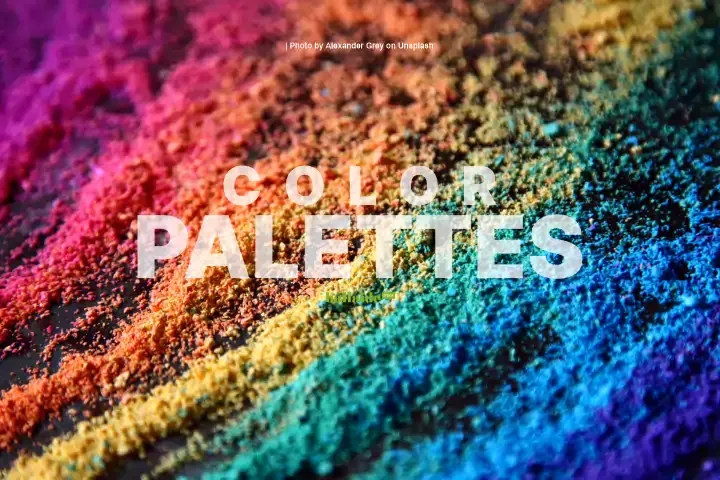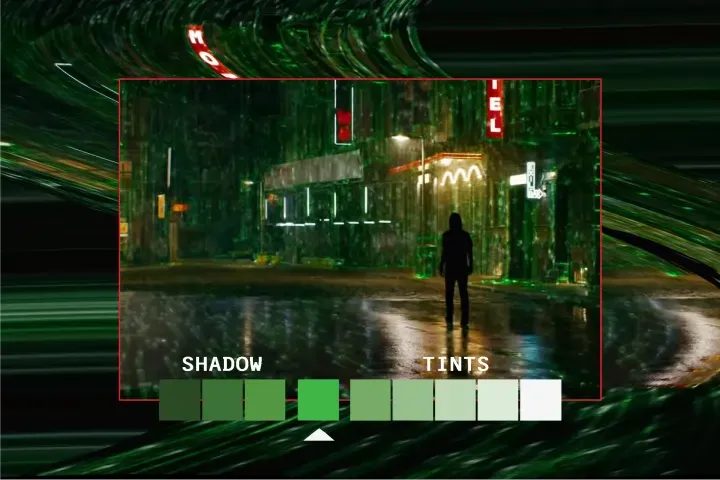Color Palettes: What is and Why is Important?
Color learn what-isIn all these fields, the right use of color palettes can greatly enhance the effectiveness of the design, evoke desired emotions, and convey the intended message. Therefore, understanding and effectively using color palettes is a key aspect of successful design.
Color actually increases brand recognition up to 80% and is the biggest reason why consumers choose to buy!
What is a Color Palette?
A color palette is a selected set of colors used in a particular design project. They are like the rules of the game when it comes to color. Their main function is to ensure consistency and harmony throughout the design. By using the same palette, the elements feel united and everything flows better visually.
Why is it Important?
Color palettes form the visual foundation of your brand, help to maintain consistency, and make your user interface aesthetically pleasing and enjoyable to use. They are important because they’re a tangible component of your brand that people notice first and foremost.
Color palettes are important in a wide range of fields, including but not limited to:
1. Design and Web Design
In the realm of design and web design, color palettes play a crucial role1. They can elevate a design, enhance user experience, and even drive conversions.
By understanding color psychology and complementary colors, designers can create stunning and effective designs.
Colors can improve visitors’ online experiences, enabling them to find the information they need and respond to your Call to Action (CTA). When used effectively in web design, color plays a significant role in branding and product messaging.
2. Fashion, Brand, & Marketing
In the fields of fashion, branding, and marketing, color palettes are equally important. They help establish a brand identity, guide users through a website, and enhance the overall user experience.
Certain colors can create optical illusions, making us appear slimmer or taller, which designers use to enhance the overall aesthetic of their designs. According to a study by the University of Loyola, Maryland, colors can increase overall brand recognition by a staggering 80%.
3. Art, Architecture, and Interior Design
In art, architecture, and interior design, color palettes are essential. They can show a certain volume or constructive detail, visually mimic certain aspects of space, provide a set of emotions or visual effects.
In architecture, the possibilities are infinite - contrasts between different materials and colors, different tendencies such as pastel or neon tones, or even acromatism.
In interior design, lighter and cooler colors make the space appear larger, while darker colors make them appear more closed and smaller to the eye.
4. Movie and Films
A film’s color palette refers to the set of colors that a filmmaker uses to create a specific mood or tone. It can consist of two or more colors that work together to create a cohesive look and feel. Filmmakers use color palettes to help tell their story and convey their message.
Sample 1, directors Lilly and Lana Wachowski used a green tint in The Matrix (1999) to create a mood palette that was suggestive of the early monochrome computer monitors.
Sample 2, The tone of a film is character. Let's learn from the filmmaker, Quentin Tarantino; Yellow was used in Kill Bill (2003) to depict Uma Thurman’s character’s madness and instability.
Sample 3, Romantic comedies use pastel shades like beige, pink and lilac.
Sample 4, Sci-fi and cyborg films use shades of blue, grey, and green.
 Cybernetic artificial robot brain AI futuristic conceptual design, 3d render — Photo by vitaliy_sokol
Cybernetic artificial robot brain AI futuristic conceptual design, 3d render — Photo by vitaliy_sokolSo, just like in design and art, color palettes in films are crucial for setting the mood, highlighting important elements, and helping to tell the story.
In conclusion, color palettes are a fundamental tool in various fields, influencing our perception of the structure, especially in residential and commercial buildings. They impact how we feel about living and working in those spaces when used in interiors. The colors used can be vibrant or soothing, depending on how we perceive them.
In all these fields, the right use of color palettes can greatly enhance the effectiveness of the design, evoke desired emotions, and convey the intended message. Therefore, understanding and effectively using color palettes is a key aspect of successful design in these fields.
How to Use Them?
Designing an effective color palette is as much a creative process as it is a technical one. Here are some steps to create a color palette:
- Understand the Brand or Project: Know what you are designing.
- What is the message?
- What emotions do you want to evoke?
- Research and Take Inspiration: Watch the competition, explore trends and find inspiration in nature, art or culture.
- Apply a Color Palette to Your Design: You can use a handy color trick known as the 60-30-10 rule. This rule helps to balance the use of primary, secondary and accent colors in different proportions.
Examples of Color Palettes
Here are some examples of color palettes:
The six tertiary colors, which are made by mixing a primary color with a secondary color. These are red-orange, yellow-orange, yellow-green, blue-green, blue-purple, and red-purple.
The colors used by famous brands, such as Coca-Cola, which uses red, white, black, and gray. Red is the main and energetic color, while white represents purity and cleanliness. Black adds sophistication and elegance, and gray is a neutral and background color.
Remember, the right color palette can make the difference between a design that feels cohesive and one that feels out of place. So, it’s time to get a thorough understanding of what a color palette is and how to create it in the most professional way.






